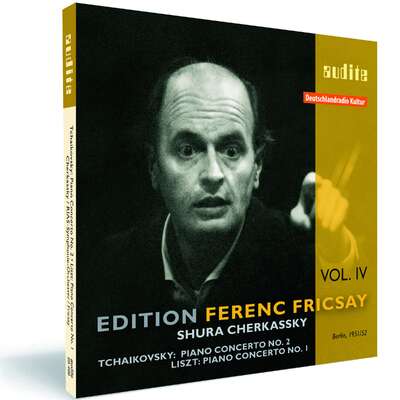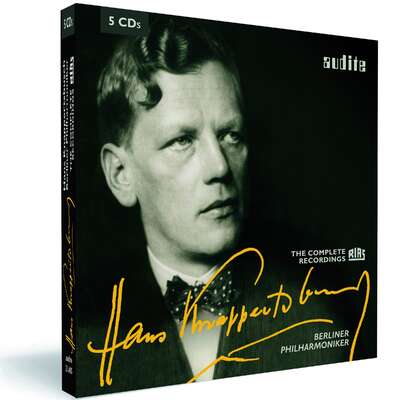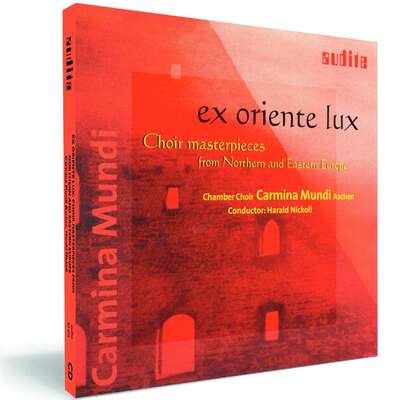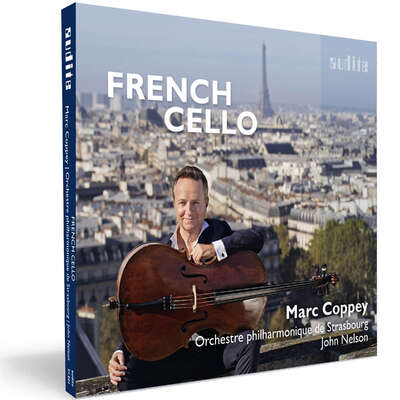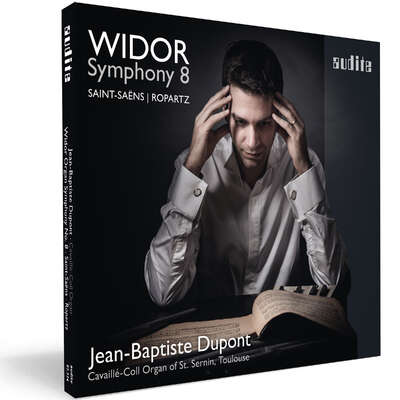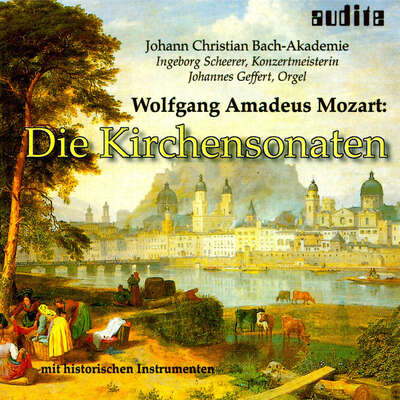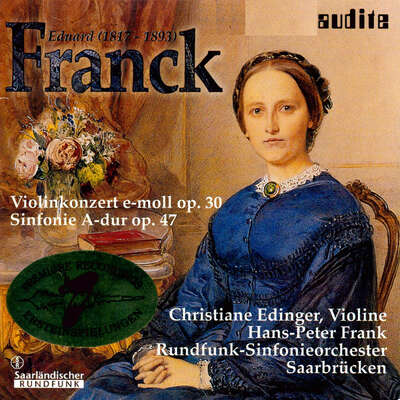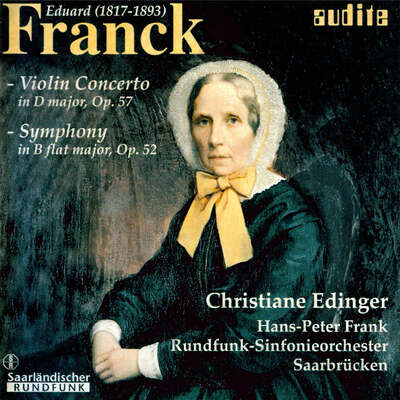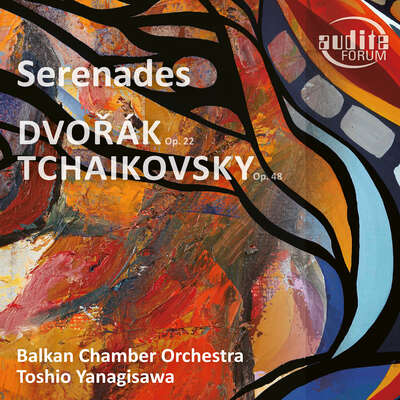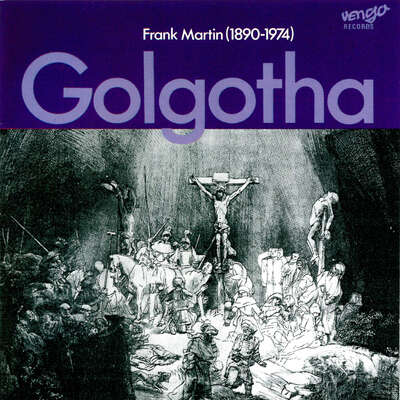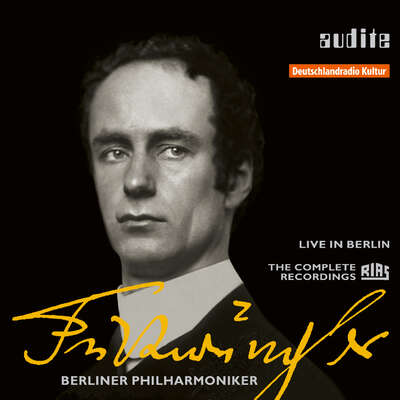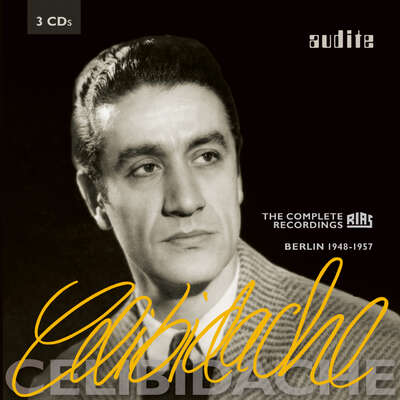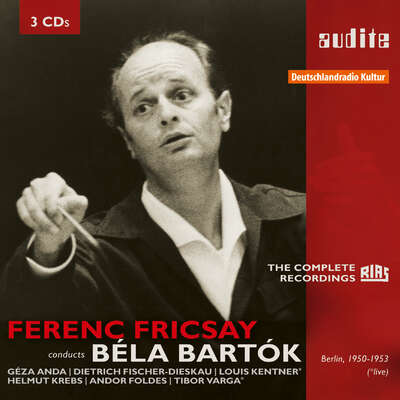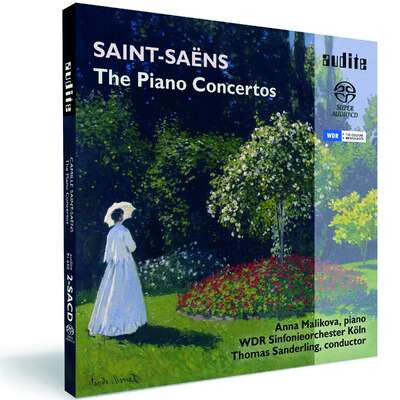
These live recordings bear witness to the close rapport between Robert Casadesus and Eugene Ormandy , two great transatlantic figures in the history of twentieth-century music and performance. Born respectively in Paris and Budapest, these two musicians laid the cornerstone for their stellar...more
"A rather more striking 1954 broadcast account of the Fourth Symphony where Ormandy conducts the Berlin RIAS Symphony Orchestra has appeared on Audite. As with the Fifth there are some fairly theatrical gear-changes and yet one could hardly fail to admire the warmth of string tone or the high level of commitment: the orchestra is plainly going all out for maximum visceral impact. But what makes this well transferred CD more or less unmissable is a remarkable performance of Saint-Saëns’s Fourth Piano Concerto with Robert Casadesus as soloist, a cool but virtuoso reading and possibly the best of the many versions of the work that we now have from Casadesus." (Gramophone)
Details
| Pyotr IlyichTchaikovsky & Camille Saint-Saëns: Symphony No. 4 & Piano Concerto No. 4 | |
| article number: | 95.589 |
|---|---|
| EAN barcode: | 4022143955890 |
| price group: | BCB |
| release date: | 27. August 2008 |
| total time: | 67 min. |
Bonus Material
Informationen
These live recordings bear witness to the close rapport between Robert Casadesus and Eugene Ormandy, two great transatlantic figures in the history of twentieth-century music and performance. Born respectively in Paris and Budapest, these two musicians laid the cornerstone for their stellar careers in the post-war United States. Here they are heard with the Berlin Radio Symphony Orchestra in riveting interpretations of two masterpieces from the late romantic repertoire. Though written only two years apart (1875 and 1877), Saint Saëns’ concerto and Tchaikovsky’s symphony reflect very different musical and mental universes. Casadesus and Ormandy bring them to life with fascinating sureness of style and unbridled expression.
There is a “Producer’s Comment” from producer Ludger Böckenhoff about this production available.
The production is part of our series „Legendary Recordings“ and bears the quality feature „1st Master Release“. This term stands for the excellent quality of archival productions at audite. For all historical publications at audite are based, without exception, on the original tapes from broadcasting archives. In general these are the original analogue tapes, which attain an astonishingly high quality, even measured by today‘s standards, with their tape speed of up to 76 cm/sec. The remastering – professionally competent and sensitively applied – also uncovers previously hidden details of the interpretations. Thus, a sound of superior quality results. CD publications based on private recordings from broadcasts cannot be compared with these.
Reviews
www.musicweb-international.com | May 2009 | Rob Barnett | May 5, 2009
These are live recordings emerging here in clean 'Honest John' mono from Audite who are quite justly held in high esteem by the German radioMehr lesen
There was an audience present in both cases and while well-groomed they are prone to the occasional, cough, creak and rustle - especially in the Saint-Säens, speaking of which this work is in two solid movements. It has a sturdy majesty and a Beethovenian repose which occasionally descends into decoration. In that sense the Concerto is no different than many other romantic concertos. Casadesus lends substance to the decoration and gravitas to the reflective moments. Decoration tips towards absurdity in the galloping section at 1.55 in the finale which sounds as if it escaped from vaudeville. The galloping figures favoured by this composer work well in the masterly Second Concerto but can seem miscalculated here.
The Tchaikovsky 4 is prime Ormandy territory and he recorded it several times. The one I am familiar with is the version with the Philadelphia on Sony Essential Classics. The italicised tenderness of the first movement is notable. Much care is taken over the most tender of details. Listen to the conductor at 1.35 in I where every hesitant breath and pressing forward is relished. Every detail is engraved by a craftsman. I have yet to hear a Monteux version of 4 but this fascination with detail reminded me of Monteux's way with the Fifth Symphony and the LSO in Vienna in 1960 (Vanguard). That said, the French conductor gives a better feeling for the overall architectonic skeleton of the work.
The brass of the RIAS Symphony Orchestra are sturdy not stolid. Listen to the way they chisel out the tragic fanfaring at 8:10 in the first movement. They major on the iron in the brass rather than the gold. Their tone is stern not plump - sin botox as we might now say.
Ormandy's approach is affectionate but never sloppy - refreshingly honest. In the finale he takes pains over clarity in the way he sculpts those gaunt fanfares. This is nowhere near as impulsively headlong as Mravinsky's Leningrad Phil DG recordings made in London in 1960. On the other hand Ormandy is a wily hand and saves the zest for the whirlwind of the finale’s last four minutes.
Ormandy, Casadesus and Tchaikovsky enthusiasts will need this.
Fanfare | March/April 2009 | James Miller | March 1, 2009
Here are two superior performances, each, in its own way, redundant. Robert Casadesus made two fine studio recordings of the Saint-Saëns Concerto,Mehr lesen
Ormandy's rhythmically supple, dynamic performance of the Symphony runs into a different problem: the availability of a better-sounding stereo recording by the same conductor. There appears to have been good chemistry between Ormandy and the RIAS orchestra, and once again, the mono broadcast is clear and not lacking in dynamic range. Among my favorite mono Fourths, it competes with Furtwängler's, but there's no lack of strong stereo competition, including that provided by this same conductor with his own Philadelphia Orchestra (the third of his four recordings of the piece).
The enthusiastic annotations are in German and English.
classiqueinfo-disque.com | Janvier 2009 | Thierry Dupriez | January 20, 2009 A contre image ?
À travers ses témoignages discographiques (comme dans le récent coffretMehr lesen
Gramophone | January 2009 | Rob Cowan | January 1, 2009
Ormandy and Ansermet - Perennials in contrast
Two ‘house’ conductors of the ‘50s and ‘60s receive the retrospective treatment
During the 1950s and '60s two of the most ubiquitous conductors on disc were Eugene Ormandy in Philadelphia and Ernest Ansermet in Geneva. Both wereMehr lesen
So why should we bother with Ansermet in Brahms? After all, the Suisse Romande Orchestra, although nearly always responsive to persuasive rostrum direction, is no match sound-wise for the fuller sonorities of London’s Philharmonia or the Philharmonic orchestras of Berlin or Vienna. What it does have, in this particular context, is an impressive pooled intelligence and a comprehensive understanding of its conductor’s clear thinking. There is absolutely no “wow” factor here: these performances brook no fuss and parade few mannerisms. Time and again one finds oneself admiring the sheer simplicity of Ansermet’s sage-like method, his insistence on allowing arguments to unfold naturally, refusing to bolster a specific point or indulge a seductive detail. His Brahms has a real sense of perspective, the First’s opening Allegro sounding fresh and unforced, the finale jubilant but with inner voices scrubbed clean. Both the Second and Third symphonies include their first-movement exposition repeats. The Fourth parades a mighty profile, especially the finale, where Ansermet holds fast to a steady tempo, much as Toscanini did in 1935, and refuses to allow the closing pages to run away with themselves. The choral works are affectionately done (though Giebel is a little past her prime), the overtures and variations are securely held in check, with the Tragic Overture receiving one of its finest recorded performances. Sound-wise things go swimmingly, the Geneva Victoria Hall’s ample acoustic easily accommodating both the scale and detail of Ansermet’s revelatory readings.
Other Eloquence Ansermet reissues include an instructively transparent orchestral Wagner programme (Lohengrin, Götterdämmerung, Meistersinger, Parsifal) and the complete Ansermet Sibelius recordings coupled with Rachmaninov’s Isle of the Dead. Some of this material has already appeared here, though not a fast and sparely textured Tapiola, nor a measured but cumulatively powerful account of Sibelius’s Second Symphony. Ansermet’s compelling 1954 Paris Conservatoire recording of Rimsky-Korsakov’s Sheherazade (in stereo of sorts) is coupled with a rousing and atmospheric mono Le coq d'or suite with the Suisse Romande Orchestra. Perhaps the most interesting of these new Ansermet releases is an imaginative coupling of Liszt (Faust Symphony, Two Episodes from Lenau's Faust, Hunnenschlacht) with Alberic Magnard’s Third Symphony.
Ormandy’s Philadelphia quota for the month is impressive but, in comparison with Eloquence’s Ansermet deluge, conceptually limited. Sony’s 10-CD “Original Jacket Collection” treats us to some much-loved but oft-reissued perennials: Respighi’s Roman Trilogy, Rachmaninov’s Second Symphony and a legendary coupling of Shostakovich’s First Symphony and Cello Concerto (with Rostropovich) are all top-of-the range. So are Tchaikovsky and Mendelssohn concertos with Isaac Stern, a two-disc sequence of Bach orchestrations (previously out on Sony Legacy) and Tchaikovsky’s Serenade for Strings. A Bartók programme (Concerto for Orchestra, Two Pictures, Miraculous Mandarin Suite) is luxuriant but lacking in bite and although a coupling of Mussorgsky’s Pictures at an Exhibition (Ravel’s orchestration) and Rimsky’s Sheherezade is both sumptuous and technically secure – “handsome” might be a better word – I’d rather Ansermet’s less comfortable but more probing accounts on Eloquence. Perhaps the least convincing performance is Tchaikovsky’s Fifth Symphony, which is both mannered and strangely lacking in tension. A rather more striking 1954 broadcast account of the Fourth Symphony where Ormandy conducts the Berlin RIAS Symphony Orchestra has appeared on Audite. As with the Fifth there are some fairly theatrical gear-changes and yet one could hardly fail to admire the warmth of string tone or the high level of commitment: the orchestra is plainly going all out for maximum visceral impact. But what makes this well transferred CD more or less unmissable is a remarkable performance of Saint-Saëns’s Fourth Piano Concerto with Robert Casadesus as soloist, a cool but virtuoso reading and possibly the best of the many versions of the work that we now have from Casadesus. Ormandy is as ever a superb accompanist but if Sony intend to supplement their “Original Jacket” set with a second Ormandy/ Philadelphia volume, I would strongly recommend choosing Ormandy’s Brahms as a theme – the concertos, the symphonies, the variations (including Rubbra’s orchestration of the Händel Variations) and other works. Now that would be worth buying.
Journal de la Confédération musicale de France | décembre 2008 | December 1, 2008
Ormandy qui fut durant 44 ans le chef admiré de l'Orchestre deMehr lesen
www.classicstodayfrance.com | Novembre 2008 | Christophe Huss | November 1, 2008
On n'avait sans doute pas déjà assez de disques d'Ormandy qui a, grossoMehr lesen
Audiophile Audition | October 30, 2008 | Gary Lemco | October 30, 2008
Two historical performances from the RIAS archives, both of which featureMehr lesen
News
Ormandy qui fut durant 44 ans le chef admiré de l'Orchestre de Philadelphie,...
Here are two superior performances, each, in its own way, redundant. Robert...
These are live recordings emerging here in clean 'Honest John' mono from Audite...
On n'avait sans doute pas déjà assez de disques d'Ormandy qui a, grosso modo,...
Two historical performances from the RIAS archives, both of which feature...












